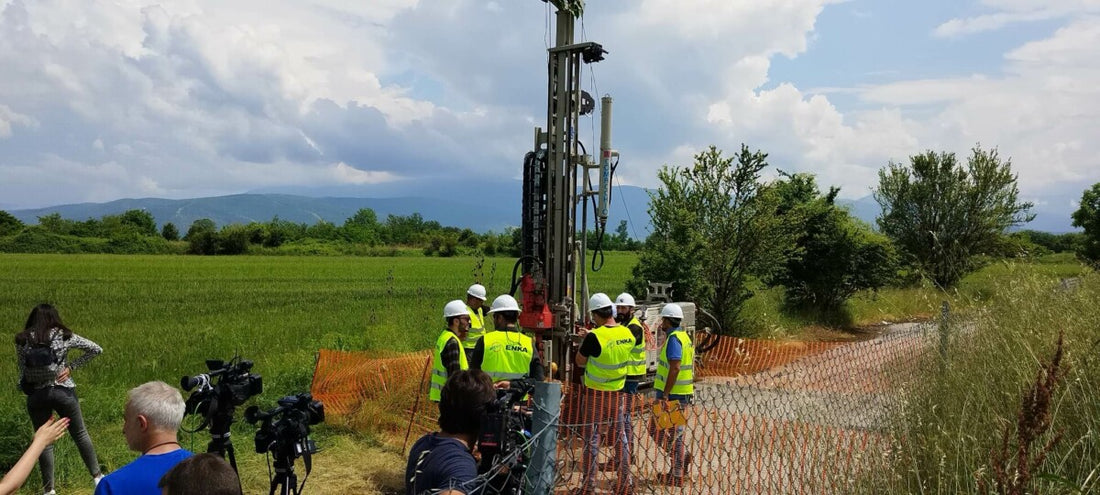
For many people, construction projects are synonymous with uncertainty. And who can blame them when short- and long-term timelines change overnight, material orders are canceled without any notice, and the website's valuable information never reaches the right people. Add to the mix unforeseen situations like the COVID-19 outbreak or extreme weather phenomena and you get the idea.
Despite the complexity of construction projects, things shouldn't be this way. Uncertainty can be reduced and critical issues can be resolved significantly faster if project teams correctly combine three vital elements: people, processes, tools.
Getting the right people to help you with your project is just as important as finding the right tools to support your processes and eventually add predictability to the way you build without getting lost in a sea of disconnected data.
This is also why the use of specific tools for construction is extremely important for your success. Unfortunately, a considerable number of project managers still choose tools like WhatsApp and Excel to track progress and communicate the latest updates to their teams.
The problem is that these tools, as good as they are, are not made for the construction industry and are unable to provide an accurate link between what is happening on the ground and its impact on the 3-6 week planning or calendar. teacher.
The result? People receive fragmented information that they cannot use because they do not know what it could mean for the development of the project.
As a result, Project Managers may have to spend up to 40% of their day chasing reports, attending endless meetings, or getting stuck on useless calls.
This certainly wasn't what they had in mind when they decided to work in construction. And the worst part? This is certainly not the way to deal with uncertainty in your projects. On the contrary, they end up causing even more confusion throughout the value chain, paving the way for costly claims and endless disputes.
The good news is that it doesn't have to be this way. Without further ado, here are the three key steps for dealing with uncertainty in your construction projects:
1. Invest in tools made for construction
We've already touched on this above, but we can't stress enough how important it is to the successful completion of your construction project. Investing in the right tools will allow you, as the project manager, to stay on top of the 3-6 week planning and master program without having to run up and down the field looking for updates.
Tools that were built with the construction industry as a focal point have a unique advantage compared to solutions like WhatsApp and Excel because they better understand how time-sensitive and delicate construction processes are.
In other words, they allow all team members to flag critical issues in a timely manner and help Project Managers maintain full visibility into the progress of each task. This way, all problems can be resolved in a timely manner and serious legal conflicts can be resolved or even avoided in a simpler and more effective way.
So the next time you hear someone on your project talking about Excel spreadsheets, emails, and WhatsApp groups, just say “no thanks!”
2. Combat administrative workload
This is another area that shows how important it is for Project Managers to choose industry-specific digital tools. Many construction projects are constantly struggling with excessive administrative workload as all stakeholders lack a smart way to report progress and connect their updates to the master plan.
That being said, Project Managers spend endless hours calling people, getting stuck in pointless meetings, or visiting the website to check if they have the right information.
And things can get even more complicated when it comes to disputing a claim. You'll have to go through 3,000 photos and endless email threads to find that one photo or that precious email that will allow you to prove that it wasn't your fault that a task was late.
3. Modernize your systems and processes
Many in construction think that standardization does not work in construction because each project has different goals and requirements. Therefore, getting people to follow a new way of working may seem pointless.
However, this is not true. Regardless of the scope or size of the project, 80% of the processes are always the same. Only 20% require special adjustments. With this in mind, it quickly becomes evident that by standardizing your systems and processes you have a unique opportunity to increase predictability and mitigate risk much more effectively.
Of course, standardization cannot happen overnight. It is an intuitive process that involves digital adoption. And this is how the holy trinity (people, systems, processes), which we mentioned at the beginning of the article, eventually comes together.
Enabling your teams to consistently repeat the same pre-designed processes, supported by construction-specific tools, can take collaborative planning on your projects to a whole new level and pave the way for successful delivery.
Most importantly, it will give you the valuable peace of mind you need as a Project Manager to focus on the tasks and issues that matter most. After all, you joined construction to participate in interesting projects that bring value back to society so you don't waste most of your day going to and from the construction site lost in administrative tasks.
Eliminate uncertainty from your projects and start delivering faster and better
Reducing risk in your construction projects may not be a walk in the park, but it's not unattainable. With the right strategy, tools, and talent in place, you can quickly see a huge improvement in the way your teams collaborate and exchange critical information.
By connecting them seamlessly and transparently, you have the opportunity to stay ahead of risks in your projects and ensure all stakeholders are on the same page. In the long run, this approach will save you from painful disputes and keep your projects well protected against claims.

